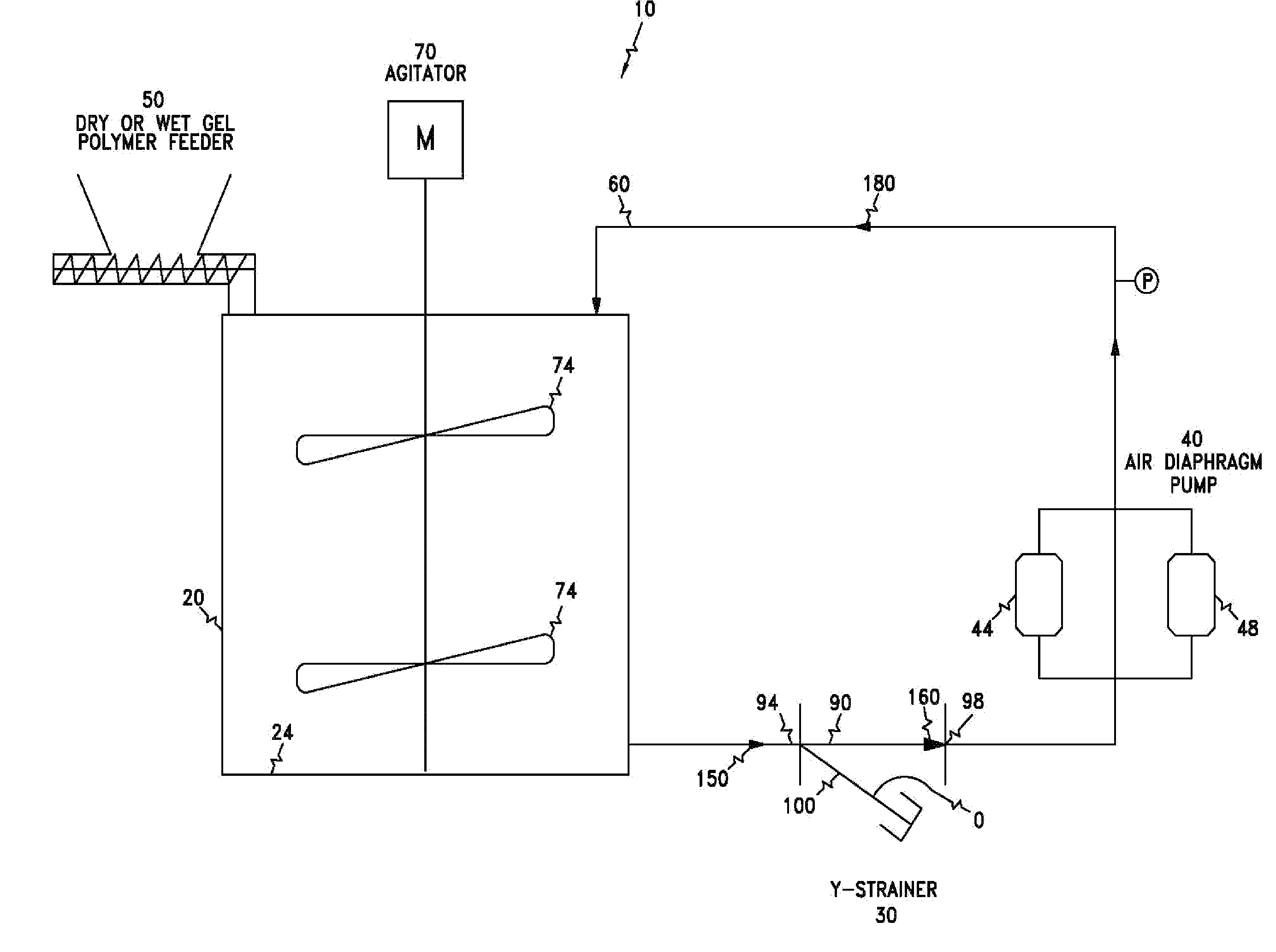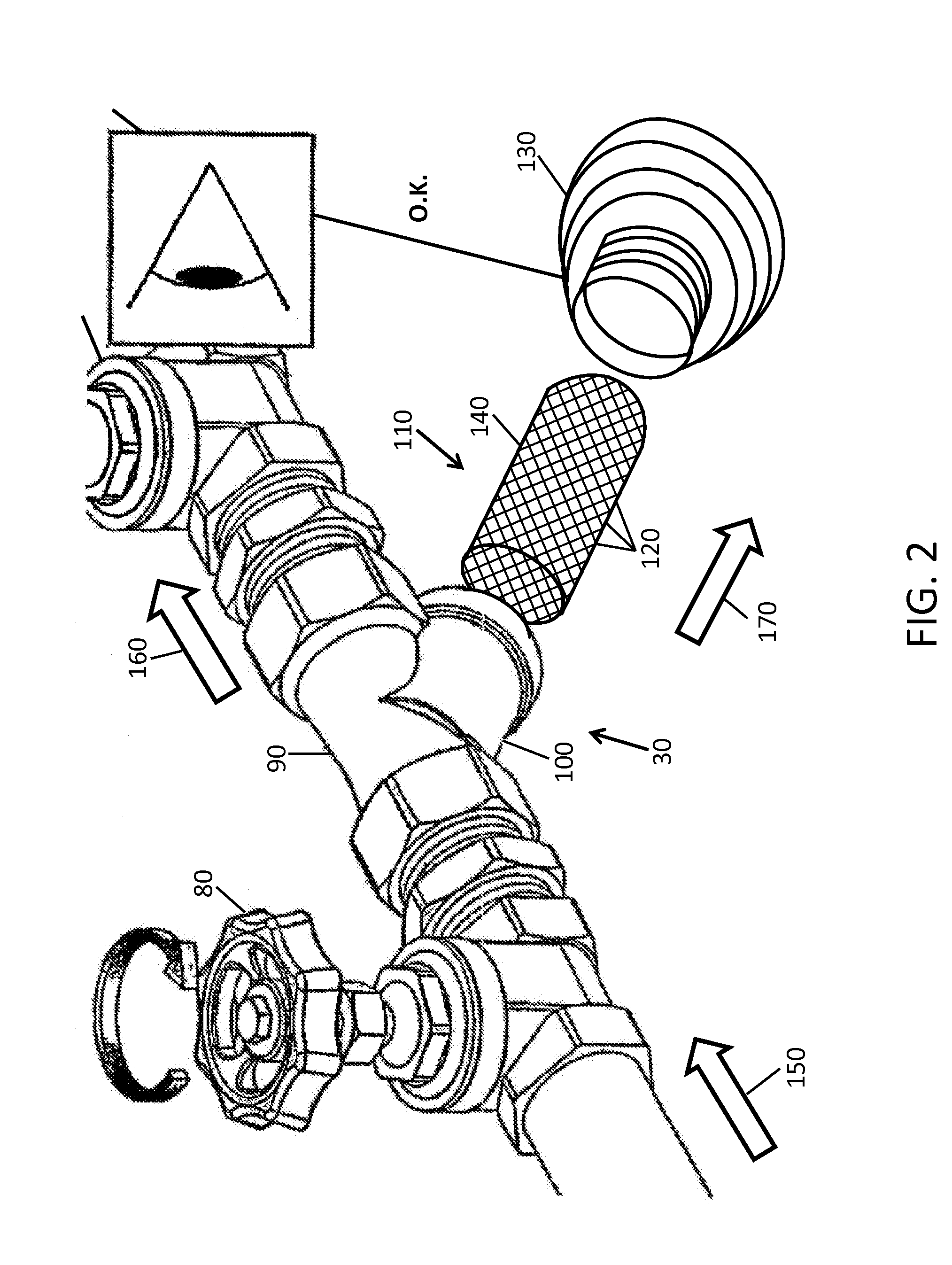Polymer dissolution system
a technology of dissolving system and polymer, which is applied in the direction of dissolving system, liquid displacement, separation process, etc., can solve the problems of cumbersome handling of polymer starting material, time-consuming dissolution of starting material, and difficult handling
- Summary
- Abstract
- Description
- Claims
- Application Information
AI Technical Summary
Benefits of technology
Problems solved by technology
Method used
Image
Examples
example 1
[0037]Polymer dissolution systems were made using various polymer forms for 10 mole % cationic polymers and pumps, with or without a y-strainer. The target gel number for this polymer was 0 G-1 G, and the target RSV was 18 dL / g or greater. For each system, parameters such as polymer solution flow rate, time to reach the target gel number, and RSV were measured. The following Table 1 summarizes the measurements.
[0038]Ref. Nos. 5, 7, 9, and 10 are control examples for wet gels in a 189 liter or 379 liter batch size, with no recycle pump or y-strainer. Compared to these control examples, Ref. Nos. 1 and 2 indicated that a homogenizer pump using high pressure / high shear, namely, the Tekmar pump, can reduce the time to reach the target gel number. However, the RSV resulting from use of the Tekmar pump in each case was lower compared to the control examples, indicating that the polymer molecular weight had undesirably degraded. Likewise, Ref. Nos. 3 and 4 indicated that a centrifugal pump...
example 2
[0042]Polymer dissolution systems were made using various polymer forms for 50 mole % cationic polymers and pumps, with or without a y-strainer. The target gel number for this polymer was 0 G, and the target RSV was 15 dL / g or greater. For each system, parameters such as polymer solution flow rate, time to reach a target gel number, and RSV were measured. The following Table 2 summarizes the measurements.
[0043]Refs. A and B are control examples for wet gels in a 189 liter or 379 liter batch size, with no recycle pump or y-strainer. Compared to these control examples, Refs. H, K, and L indicated the Welden pump, coupled with a y-strainer, reduced the time to reach the target gel number, without polymer degradation. Refs. I and M indicated that a screen would be required for fast dissolution of polymers. FIG. 4 compares the dissolution times of Refs. H (air double diaphragm pump with a y-strainer) and M (air double diaphragm pump without a y-strainer).
[0044]Refs. E, F, and O are contr...
PUM
| Property | Measurement | Unit |
|---|---|---|
| particle sizes | aaaaa | aaaaa |
| particle sizes | aaaaa | aaaaa |
| sizes | aaaaa | aaaaa |
Abstract
Description
Claims
Application Information
 Login to View More
Login to View More - R&D
- Intellectual Property
- Life Sciences
- Materials
- Tech Scout
- Unparalleled Data Quality
- Higher Quality Content
- 60% Fewer Hallucinations
Browse by: Latest US Patents, China's latest patents, Technical Efficacy Thesaurus, Application Domain, Technology Topic, Popular Technical Reports.
© 2025 PatSnap. All rights reserved.Legal|Privacy policy|Modern Slavery Act Transparency Statement|Sitemap|About US| Contact US: help@patsnap.com



